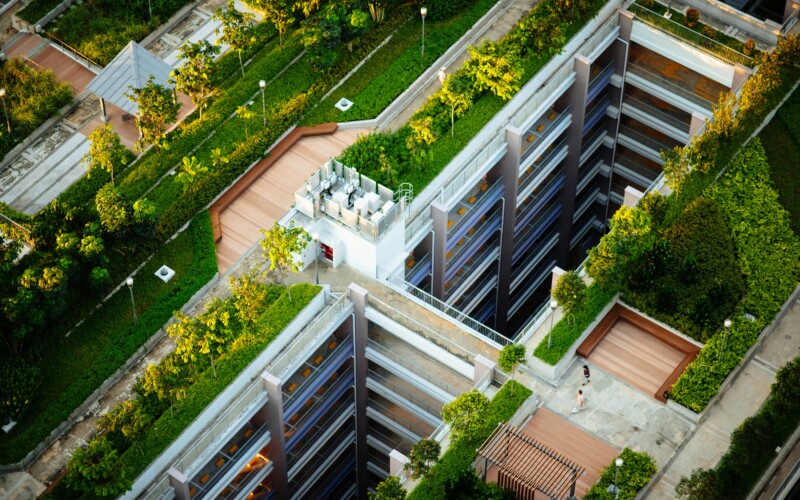
The Swiss architects Pierre Jeanneret and Le Corbusier penned an architectural manifesto entitled ‘Five Points of a New Architecture’ in 1923. One of the points was: ‘The roof garden becomes the preferred place to spend time in the house and also means that a city regains its built-up area.’ Since then, the concepts envisaged for the ‘5th façade’ have extended way beyond its use as a personal retreat. Back then it was already considered a way of compensating for the growing urbanisation of previously untouched land as well as an opportunity to contribute positively to the microclimate on roofs, especially in inner-city areas.
Using the roof is becoming increasingly important. The invisible part facing the sky, the ‘5th façade’, is suitable for all kinds of purposes and offers plenty of solutions for designing the living space and influencing the (micro-)climate. First of all, it is worth taking a look at the possibilities for creating additional living space, especially in densely populated areas. QUARTIER, a German magazine for the construction of urban housing, writes: ‘Using The roofs of houses built from the 1950s to 1970s is the best way to ease the strain on the tight housing market (in the cities, Editor’s note). Given their age, they will soon need renovation, so extending the space at the same time is a logical conclusion.’ Even five years ago, the Germany Study 2019 by TU Darmstadt and the Pestel Institute identified unused living space on and under roofs. And the potential becomes even greater if we look at the bigger picture. Prof. Karsten Tichelmann from TU Darmstadt: ‘Office and commercial buildings – as well as single-storey discount stores with their parking lots – have immense potential for additional apartments – through redensification.’ This ‘vertical densification’ (Glossary link) is brimming with sustainable ways of creating new urban living space without leaving inner cities deserted or resorting to the often environmentally fraught solution of building settlements on the periphery of cities.
The consulting firm PwC published a white paper on vertical densification in August 2023 together with the Deggendorf Institute of Technology. The key issue: ‘Is vertical densification of living space in conurbations a sensible way of meeting current and future housing challenges while giving due consideration to sustainability aspects?’ The answer to this long question is certainly to the point, also in the analysis of this white paper: yes. There is now a consensus throughout the construction industry that the ESG criteria – which must be complied with to achieve the carbon targets – will also require a change in mindset and repurposing if they are to be put into practice. Included in this is a new circular economy within the construction industry (Urban Mining (Glossary link)) and (re-)purposing of the 5th façade (Glossary link), and not just for living space.
Not only do fresh utilization concepts for old buildings land sealing with all its negative aspects and cut back on the consumption of (new) resources. Indeed ‘new on old’ can become a genuine sustainability strategy by harnessing the positive effects on factors influencing the microclimate. ‘Roof gardens’, as envisaged by Le Corbusier, play an important role in this context: They create new biotopes, help to retain rainwater, bind fine dust and produce oxygen when cultivated properly and hence improve the microclimate in urban areas. Roofs are also great places to keep beehives. And we were able to set up our company headquarters on an old building: https:/
Visit our website to learn more about trend topics and current terminology from the sustainable construction industry: https:/
Read more (optional):
https:/
https:/